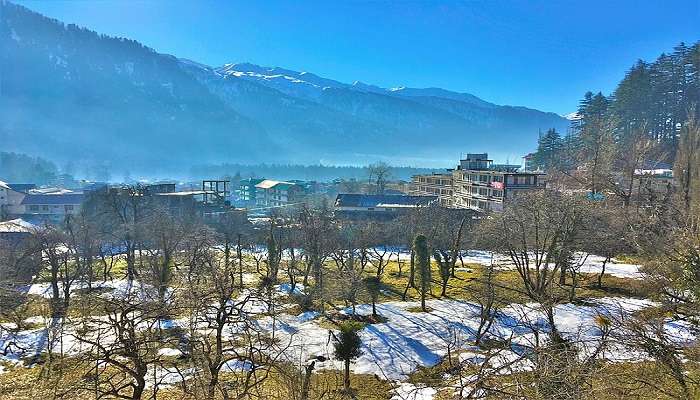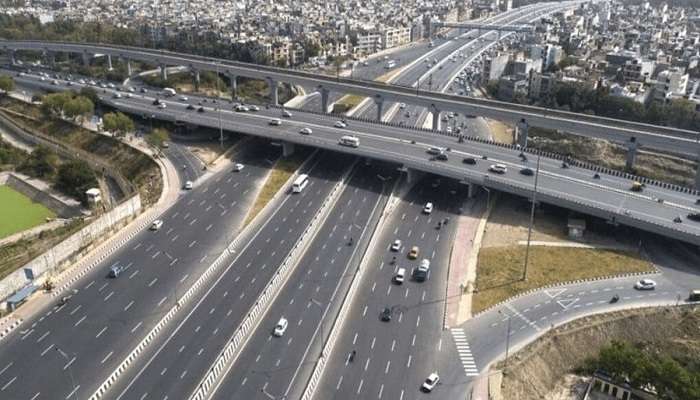Mini Qutub Minar A Hidden Treasure Of Delhi’s Past To Visit In 2026
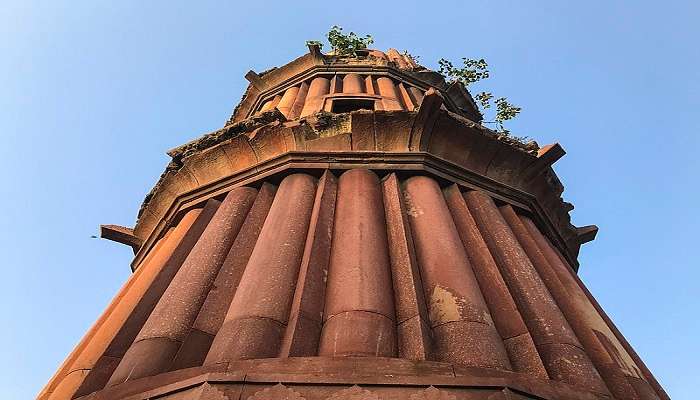
Tucked deep inside the cacophony of streets in the Hastsal village of West Delhi lies the Mini Qutub Minar, a turn-off of sorts from the grandeur expressed by its counterpart, the Qutub Minar. Constructed a bit later, during the late 17th century, under Mughal Emperor Aurangzeb’s reign, this lesser-known monument was intended to replicate in architecture the same original Qutub Minar. This small Qutub Minar, or Hastsal ki Lat, is about 17 meters high and made of red sandstone, with all the major elements of the Mughal style in architecture well reflected in its highly ornate decorations. This really nice building adorns most of the diachronic elements of time and neglect but still charms visitors rich in history and a delight for curious visitors.
Mini Qutub Minar History
The Mini Qutub Minar would therefore remain interesting to analyze as a window into the architecture and urban design of this phase of the Mughal era. Smaller though it is, it’s fluted columns and decorative bands reflect much of the intense care which characterizes larger Mughal monuments. This treasure, hidden behind some of the more well-known historical places in Delhi, gives a totally different perspective on the rich past of the country.
Restoration works are being done in this place, and it is in the process of mainstreaming for the important cultural and historical place it portrays. This is a place that any soul who wants to go off the beaten path should visit. A trip to Mini Qutub Minar is an experience enriched with history, architecture, and the feeling of discovering something new.
1. Construction And Historical Background
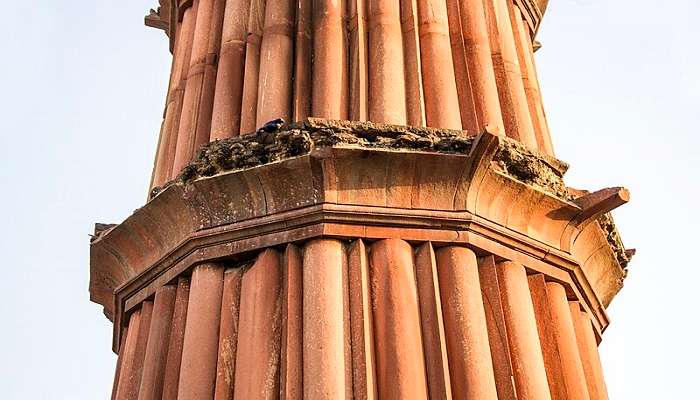
The Mini Qutub Minar is more popularly known as Hastsal ki Lat, a rather interesting historical monument belonging to the late 17th century during Mughal Emperor Aurangzeb’s reign. Standing inside a village by the name of Hastsal in West Delhi, the minaret was built to emulate the grandeur and architectural brilliance of the famous Qutub Minar. At about 17 meters high, this Hastsal ki Lat has been designed in the style of its taller counterpart for its majestic style and ambitious heights.
The Mini Qutub Minar was built of red sandstone, a highly preferred building material during the Mughal period due to its strength and beautiful colour. Intricate carvings adorn this minaret in minute detail, reflecting the workmanship of that time. In their design and execution, they represent the architectural trends with intently worked-out geometrical patterns and floral motifs, characteristic features of Mughal architecture.
Though small, the Mini Qutub Minar has enormous historical and architectural value. It can be said to be an indicator of the Mughal Empire’s architectural enterprise during Aurangzeb’s reign, characterized by monumentality and flair for urban aesthetics. The minaret not only reveals the keenness of the Mughals to imitate and commemorate their success in architecture but also their nature of construction of long-lasting and visually pleasurable buildings.
Hastsal ki Lat has, ever since the time, overlooked the magnificence of architectural innovation and cultural richness of the Mughal era. It gives one a view and a peek into the artistic and historical context in which it was built. The Mini Qutub Minar is one such monument that brings nuance and adds value to our understanding of Mughal architectural heritage and Delhi’s larger historical legacy.
Tip: Compare architectural elements in studying the Mini Qutub Minar with those of the original Qutub Minar.
Also Read: Chor Minar
2. Decline And Recovery Efforts

For centuries, the Mini Qutub Minar has been at the mercy of wind, weather, and a general state of neglect. The apparent factors that definitely led to its gradual decline were the surrounding urbanization and lack of proper regular maintenance. However, recognizing its historical and cultural value, recent efforts have been made to preserve and restore this hidden gem.
These conservation efforts will stabilize the structure, prevent further deterioration, and emphasize its significance as a rich part of Delhi’s historical tapestry. The restorations will include cleaning intricate carvings, reinforcing stonework, and improving the surrounding environment to make it more accessible and visitor-friendly. Such efforts are of great importance to ensure that the Mini Qutub Minar continues to be a strong link with Delhi’s Mughal past for generations to come.
Tip: To aid the restoration process, consider donating to heritage preservation organizations or joining guided tours that help spread awareness about lesser-known sites, such as the Mini Qutub Minar.
3. History And Background

Mini Qutub Minar Hastsal or Hastsal ki Laat is a historic minaret located in the Hastsal village of West Delhi. The monument was built in the late 17th century during the reign of Mughal Emperor Aurangzeb to replicate the glory of Qutub Minar in Mehrauli. Measuring about 17 meters high, it is constructed from red sandstone and has ornate carvings that represent the architectural style of the Mughal period.
Much smaller than the more famous counterpart, it represents the same architectural enterprise and cultural inheritance of the Mughals—showcasing their finesse in craftsmanship and artistic taste. The fact that a minaret is present in Hastsal is perhaps a testament that the Mughal architectural influence spread well beyond the central hubs of their empire.
Tip: To appreciate this monument more, view the original Qutub Minar first, then note similarities and differences in style and workmanship in this mini version.
Related Post: Hijron Ka Khanqah
4. Preservation And Accessibility
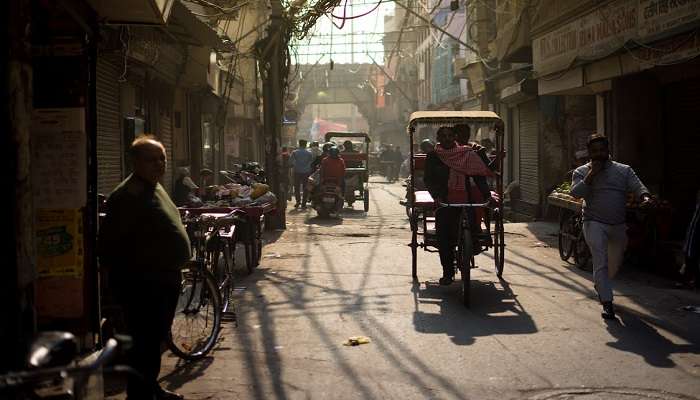
Though this is a historical site, Mini Qutub Minar Hastsal has gone through tough times itself, such as disregard and urbanization. Restoration works recently undertaken relate to stabilizing the structure, cleaning the intricate carvings, and reinforcing the stonework so that it may not fall apart anymore. Such efforts will help consolidate the monument’s historical integrity and provide it with life for generations to come.
There is a rather less frequented part of Delhi that hosts the Mini Qutub Minar. Therefore, it offers an odd chance for a tourist to get to one of the secluded, offbeat places away from the more crowded tourist spots. It can be accessed by road, with the nearest metro station being Uttam Nagar on the Blue Line, from where one can hire an auto-rickshaw or cab to reach Hastsal village.
Tip: If you plan on visiting, October to March is a more comfortable time to visit the site. Carry water and other basics as there may not be long listings of tourist facilities here.
You May Also Like To Read: Delhi To Badrinath Road Trip
The Mini Qutub Minar stands as an extraordinary, perhaps overlooked, monument within Delhi’s rich tapestry of history. It reflects the construction time, dating back to the reign of Emperor Aurangzeb, along with the architectural skills and urban development goals that characterized the Mughal era. Once a victim of time and neglect, restoration works grant this forgotten jewel new life, ensuring its protection for generations to come. A visit to the Mini Qutub Minar presents that rare opportunity to familiarize ourselves with a nearly unknown chapter of Delhi’s past and its historic aesthetic value. This tiny but beautiful structure beckons closer acquaintance with the layered history of this city, a reminiscence of an immortal Mughal dynasty. So why wait? Plan your next trip to Delhi today!
For our editorial codes of conduct and copyright disclaimer, please click here.
Cover Image Credit: Indrajit Das for Wikimedia Commons
Frequently Asked Questions About Mini Qutub Minar
What is Mini Qutub Minar Hastsal?
The Mini Qutub Minar Hastsal, or Hastsal ki Laat, stands 17 meters tall in the midst of this village in West Delhi. It was built at the end of the 17th century by Mughal Emperor Aurangzeb and designed as an emulation of the architecture of the famous Qutub Minar of Mehrauli. This minar is made of red sandstone, with intense carvings on the body, to form a mark of respect toward Mughal architecture.
What is the difference between the original Qutub Minar and this, that is, the Mini Qutub Minar?
Though architectural in features with the original Qutub Minar, with the same red sandstone and carvings, it stands to a mere 17 meters against the towering Qutub Minar at 73 meters. Mini Qutub Minar was conceived more as a mark of respect to the more famous cousin—the essence of style and skill in miniature form.
What is the historical importance of Mini Qutub Minar Hastsal?
Mini Qutub Minar, Hastsal, holds historical significance as it depicts the huge architectural ambitions and rich cultural heritage of the Mughal era. It was constructed during Aurangzeb's reign and gives an idea about the architectural efforts invested during that period and the urban planning for the same. Its design and construction methods bring out the minute craftsmanship and artistic excellence of the Mughal period.
What efforts are being made for the preservation of the Mini Qutub Minar?
The recent efforts in the form of structural stabilization, cleaning of the intricate carvings, and reverting the stone items to their original form by way of stonework reinforcement at the Mini Qutub Minar are some attempts being made toward its preservation. In fact, restorative works are really essential to ensure that this monument retains its historical value and is passed on to future generations in as good a condition as possible. This is towards which heritage preservation organizations and local authorities are making all possible efforts.
How to reach Mini Qutub Minar Hastsal?
The Mini Qutub Minar Hastsal is located in the village of Hastsal in West Delhi. People can access this site by road with the nearest metro station being Uttam Nagar on the Blue Line. From the metro station, one can hire auto-rickshaws or cabs to reach the village. It is advised that visitors roam during the cooler months and carry their water bottles and other essentials as these facilities might not be extensively available at the site.
People Also Read:
Jamali Kamali Mosque And Tomb Agrasen Ki Baoli Bhuli Bhatiyari Ka Mahal

With a passion for exploring and travelling to the roads long forgotten, experience the world through enthralling stories and adventures. Join me as I share my experiences at some of the world’s most popular tourist destinations and quench that pestering curiosity with something exciting!



